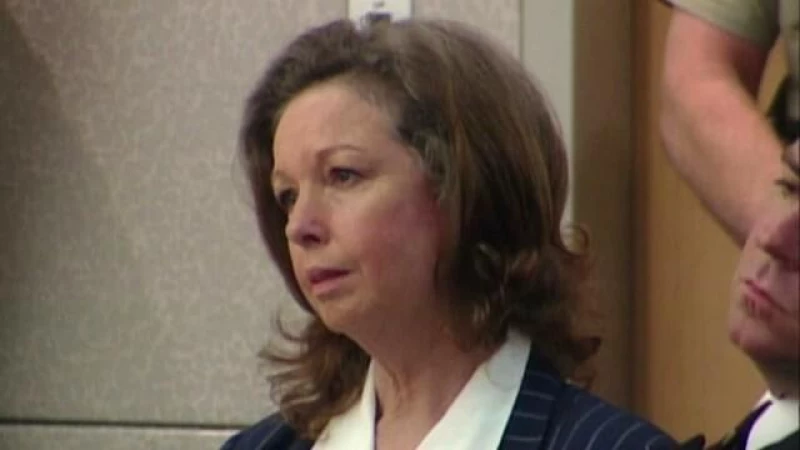Jane Dorotik has spent two decades fighting for her freedom. The California mother and wife was convicted of murdering her husband Bob in 2001, but always maintained her innocence.
From prison, where she was serving a sentence of 25 years to life, Jane spent years filing motions pushing for a new examination of the evidence.
Working with Loyola Project for the Innocent, new testing of evidence was done, including of blood found in the couple's bedroom. They said it revealed some of the spots were never tested and others were not blood at all.
"If you just look at all of the pieces of evidence that Loyola was able to absolutely take apart, and yet we know what was told to the jury in the original conviction," Jane Dorotik tells "48 Hours" correspondent Erin Moriarty, who has has covered the case for 24 years.
"Jane, how would you describe what the last 22 years have been like for you?" Moriarty asked.
"It's been torturous in many ways," explained Jane. "I suppose many moments when I thought, "How do I keep going?'
THE MYSTERY OF BOB DOROTIK'S DEATH
As the story goes, Jane Dorotik found herself in a nightmare in the year 2000. The peaceful life she once knew with her husband Bob in the serene foothills near San Diego had been shattered.
Jane Dorotik: How is this possible? How could this happen? I must be dreaming and will wake up soon.
Authorities had their eyes on Jane as the main suspect in Bob's murder, alleging a brutal attack took place in their home.
Jane Dorotik: I swear, I did not do this. I adored my husband.
At 53 years old, Jane and Bob, 55, had spent more than half of their lives side by side.
Jane Dorotik: I was just 23 when we tied the knot ... Bob was an amazing, affectionate, and imaginative person.
Bob had a long career as an engineer, while Jane worked as a nurse and later as an executive in healthcare. Together, they raised three children: Alex, Claire, and Nick.
Jane Dorotik: Our family has always been the most important thing to both of us.
Their horses were also a significant part of Jane's life. She loved breeding and riding them, while Bob was a dedicated jogger. Jane recalls the last memory she has of her husband.
Jane Dorotik: Bob was sitting right here, facing the TV.
Despite being a suspect, Jane allowed "48 Hours" to enter her home and investigate.
Jane Dorotik: He said he was going out for a jog, and he was actually — had his jogging suit on, was tying his shoes. … That was the last I talked to him.
It was around 1 p.m. on Feb. 13, 2000, when Jane says Bob left to go for that run. As hours passed without any word from him, Jane says she grew concerned.
Jane Dorotik: It was beginning to get dark … I — decided to go out and look.
Jane says she searched for Bob, driving up and down the hill where he sometimes ran. By 7:45 p.m., Jane's concern turned to fear.
Jane Dorotik: I said, "Enough. This is enough. Something is wrong." … And that's when I made the call to the Sheriff's Department.
As Deputy James Blackmon, and others from the San Diego County Sheriff's Department, searched for Bob, concerned friends and family gathered at the Dorotik house.
Claire Dorotik: The minute I saw my mom's face, I knew right away something terrible had happened.
The Dorotik's daughter, Claire, 24 at the time, had spent the weekend visiting her aunt and returned home to a distraught Jane.
Claire Dorotik: She was freaked out, she was scared, she was nervous, she was crying.
Jane Dorotik: It was a horrifying feeling that got more and more horrifying when he wasn't found.
And then, in the predawn hours of Feb. 14, Deputy Blackmon turned into a driveway, several miles from the Dorotik home, and noticed a body off the road.
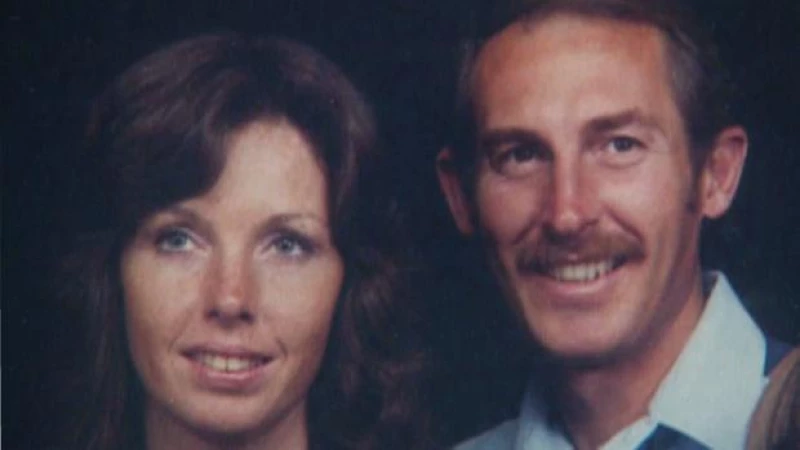
Deputy Blackmon (2001): At this point, I could see the shirt, the … pants … And he was laying on his back.
From Jane's description, he immediately knew it was Bob Dorotik.
Det. Rick Empson: I got there a little after seven in the morning.
San Diego County Sheriff's Detective Rick Empson was called to the scene.
Det. Rick Empson: There was no evidence of any type of vehicle accident.
The evidence Empson did find suggested something else.
Det. Rick Empson: I could see that he had blood on his face … there was blood near the back of his head, and I could see that there was a rope around his neck.
Bob Dorotik had been bludgeoned and strangled. The one-time missing person case had turned into a homicide investigation.
Erin Moriarty: Is there anybody you could think who would want to see your husband dead?
Jane Dorotik: Nobody. Nobody.
As law enforcement asked Jane questions about Bob, she let them into her home.
Jane Dorotik: "Come in. Search. Look for anything."
Detective Empson's attention was drawn to a piece of rope hanging from the porch, reminiscent of something he had seen on Bob Dorotik.
Det. Rick Empson: It seemed to be the same type of rope found around his neck.
Upon entering Bob and Jane's bedroom, investigators made a disturbing discovery. They suspected they were looking at blood spatter.
Det. Rick Empson: We had no doubt that this assault took place in the master bedroom.
They meticulously recorded their findings in a diagram, taking photographs of what they believed to be blood on various bedroom items, including a significant blood stain on the underside of the mattress.
Jane Dorotik: I remember Bob mentioning getting some blood on the mattress when he had a nosebleed.
Jane explained that there were reasonable explanations for some of the other blood traces as well — their dogs had been injured and bled.
Jane Dorotik: Our small dog had a draining abscess on her cheek at the time, so we would find little drops of blood when she sat on the couch. The pieces of carpet that were removed by the detectives were believed to have blood on them.
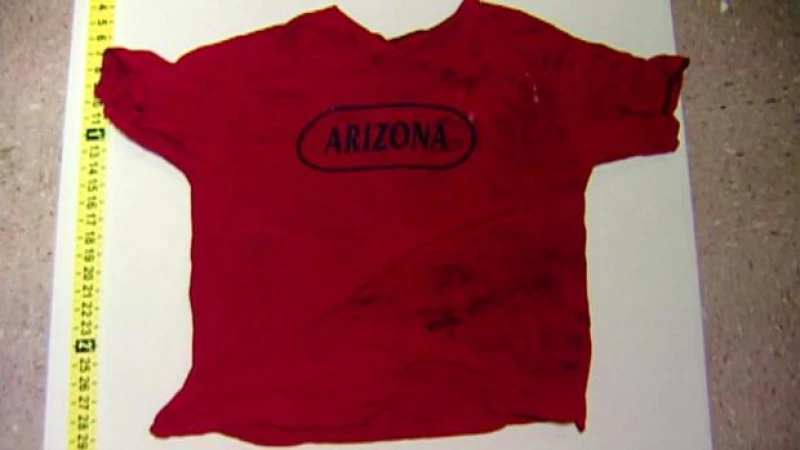
The discovery of blood spatter all over the bedroom left Jane in shock.
Erin Moriarty: Can you offer any alternative explanation for how the blood spatter ended up there?
Jane Dorotik: Not really.
Erin Moriarty: On the ceiling, on the window, on the walls?
Jane Dorotik: No.
Adding to the suspicions of the authorities was the bloody syringe found in the bathroom garbage. Jane claimed she used it for medicating her horses.
Jane Dorotik: I know that I give the horses shots all the time... if you go look in my fridge right now, you'll find horse syringes.
Investigators speculated that Jane struck her husband with an object in the bedroom and then strangled him. Afterwards, she dressed him in his jogging suit, placed him in their truck, and disposed of him along the side of the road where his body was discovered.
Erin Moriarty: Why do they suspect you of killing your husband?
Jane Dorotik: You know, I guess I've replayed that scenario a billion times. I don't know.
However, investigators believed they had a clear motive - money and the desire to escape a troubled marriage. Jane was the primary earner, and it was revealed that the couple had separated for a year in 1997.
Jane Dorotik: I don't make any apologies for the fact that we had rough times. But that doesn't change the fact that we loved each other.
And that love, says Jane, is why they reconciled. They had been back living together as a couple for a year-and-a-half before Bob was killed.
Jane Dorotik: I really think the separation caused us to really regroup and think about what was important.
Claire Dorotik: They were getting along better than they ever had in the past. I was living there. I can tell you that.
But law enforcement was unmoved, and three days after Bob Dorotik's body was found, Jane was arrested, and charged with first-degree murder.
Jane Dorotik: I know I didn't do this. I know there is a killer out there … but how am I going to clear myself?
Kerry Steigerwalt: She's baffled 'cause I don't think she knows what happened.
Released on bail, Jane started preparing her defense, hiring attorney Kerry Steigerwalt.
Kerry Steigerwalt: She knows she's placed as the killer and she's not the killer.
And at trial, Jane's attorney would present a surprise suspect, who he felt was responsible for Bob Dorotik's murder.
THE TRIAL OF JANE DOROTIK
Jane Dorotik: Despite my innocence, I have lost faith in the legal system and fear being wrongly convicted.
While Jane's apprehension loomed over the trial, her daughter Claire Dorotik remained steadfast in her belief in her mother's innocence.
Claire Dorotik: My mother is incapable of committing this crime. She had no reason or opportunity to do so.
However, during the 2001 trial, a year post the murder, prosecutor Bonnie Howard–Regan painted a different picture. She portrayed the Dorotik's marriage as troubled and insinuated that Jane had a motive to avoid paying alimony to Bob in a divorce.
Bonnie Howard–Regan (in court): Bob Dorotik never went jogging. And he never left that residence alive.
Bonnie Howard–Regan (in court): Can you estimate the time between Mr. Dorotik eating and his death?
Dr. Christopher Swalwell: Yes. It was very shortly after he ate. I would say it was probably within a couple of hours.
And he wasn't killed on the side of the road, the prosecutor said. There wasn't enough blood there. Instead, she said Bob's blood was all over the bedroom. Lead detective Rick Empson testified he had asked Jane to explain that.
Det. Rick Empson (in court): She indicated initially that she had a dog that — had been bleeding, and then indicated that approximately a week prior, Bob had a bloody nose over in the corner by the stove, and that Bob had cleaned it up.
There was evidence someone cleaned the bedroom. The carpet next to the potbelly stove and tiled floor was wet and had blood stains underneath.
Erin Moriarty: Did any of the blood from his nosebleed get on the carpet?
Jane Dorotik: Uh huh (affirms).
Erin Moriarty: Do you know where?
Jane Dorotik: Uh huh. Right next to the tile. 'Cause I — I'm the one that helped him clean it.
Authorities dismissed Jane's explanations. Their theory was that Jane hit Bob in the head in their bedroom with an object while he was lying in bed, although they never identified or found any weapon. Charles Merritt, a criminalist and bloodstain pattern analyst for the San Diego County Sheriff's Crime Lab, recounted 20 locations where he saw blood stains.
Charles Merritt (in court): On one of the pillows … on a lamp … this particular nightstand. … on the potbelly stove … on the ceiling itself. … and then on the underside of the mattress.
The jury was also presented with tire tracks discovered near Bob's body. The state's expert, Anthony DeMaria, confirmed that he matched the three different types of tires on Dorotik's truck.
Bonnie Howard–Regan (in court): Are you suggesting that the measurements taken at the scene were identical to the measurements taken from the actual vehicle?
Anthony DeMaria: Yes.
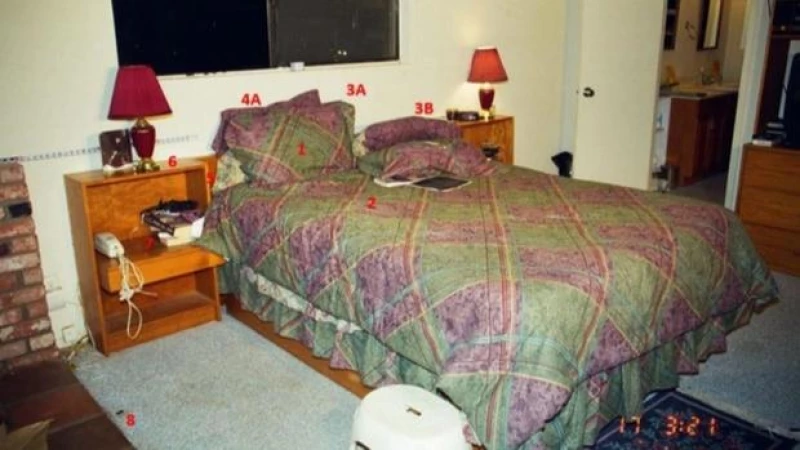
The most incriminating evidence linking Jane to the murder, according to the prosecutor, was the syringe discovered in the bathroom. It contained traces of a horse tranquilizer. Although there was no proof that Bob had been injected with anything, the syringe had Bob's blood and a bloody fingerprint on it.
Bonnie Howard–Regan (in court): The evidence will demonstrate that the fingerprint on this syringe belonged to Jane Dorotik.
Erin Moriarty: Can you elaborate on that?
Jane Dorotik: I cannot fully explain it, except that I recall assisting Bob in cleaning up a nosebleed. If that coincided with the moment I disposed of the syringes in the trash and had some blood on my hand, that could have led to that outcome.
However, the most compelling witnesses were the Dorotiks' two sons, Nick and Alex. Both of them testified against their mother.
Bonnie Howard–Regan (in court): Did you mention anything specific about the syringe?
Nick Dorotik: Well, I asked her — how it got there and what it was doing there.
Bonnie Howard-Regan: And what was your mother's response?
Nick Dorotik: She said that — her biggest fear in all this was that the — that us family members would start questioning her.
Kerry Steigerwalt (in court): Your mother always settled things logically, tried to?
Alex Dorotik: No.
Kerry Steigerwalt: — you wouldn't agree with that statement?
Alex Dorotik: Nope. …It would be my mom basically saying, "This is what you have to accept." And then my dad would either accept it or there would be threats of divorce or something. That's what I remember from growing up.
Jane's attorneys Kerry Steigerwalt and Cole Casey admitted it was a big blow.
Erin Moriarty: Would you say that's been the most damaging testimony?
Kerry Steigerwalt: Yeah.
Cole Casey: It's not what they said. It's the fact that they were there testifying for the prosecution.
When it came time for the defense to present its case, Steigerwalt actually agreed with the prosecution on a major point — that the murder took place in the bedroom. But he had a jaw-dropping alternative suspect: Claire Dorotik.
Kerry Steigerwalt (in court): Ladies and gentlemen, Claire hated her father.
He claimed Claire, an avid horsewoman, hated her father because he threatened to sell the animals she loved – and suggested that she was capable of murder.
Kerry Steigerwalt (in court): That's what Claire is. A hot-tempered, explosive individual.
It was a risky strategy that Jane reluctantly agreed to.
Jane Dorotik: All I can do is trust what Kerry says is the best way to go.
Erin Moriarty: Are you at all concerned that the jury will wonder about a woman who would allow herself to be defended by pointing the finger at her daughter? Could that work against the two of you?
Kerry Steigerwalt: It may. I don't know. … I think it is the most viable defense. And I think it's supported by the best evidence.
Steigerwalt insisted Jane wasn't physically able to commit the murder, but Claire was.
Kerry Steigerwalt (in court): She runs marathons. And she's a personal trainer. She is as fit a woman as you will see at the age of 24.
But remember, Claire and her aunt said they were together, two hours away.
Kerry Steigerwalt (in court): They called the aunt ...That's the extent of the investigation on the alibi of Claire Dorotik. … That alibi is nonsense.
Kerry Steigerwalt (in court): The prosecution had focused on one person and that's not the way to conduct an investigation. That's not the way to run a case.
Bonnie Howard-Regan (in court): Jane Dorotik and Bob Dorotik were the only two people in that home that weekend.
Bonnie Howard-Regan said there is no need to investigate further when you have sufficient evidence.
Bonnie Howard-Regan (in court): They searched that bedroom and they saw all the blood and they knew that was the crime scene … What more investigation do they need to do?
It took the jury four days to return a verdict.

COURT CLERK: We the jury in the above titled cause find the defendant Jane Marguerite Dorotik guilty of the crime of murder in the first degree in violation of penal code …"
Erin Moriarty: Did Jane Dorotik get a fair trial?
The Story of Jane Dorotik: A Fight for Innocence
Matthew Troiano: No. No. … Because fairness means that you're presenting things accurately, and it — it appears like it was not done accurately.
Jane Dorotik (jail interview with Erin Moriarty): It almost didn't register for a minute. It's like "No, this can't be." … I was so certain that I was walking out … I thought they would see the truth.
Jane Dorotik never imagined she'd be found guilty.
Jane Dorotik (jail interview): It's hard to keep going (crying).
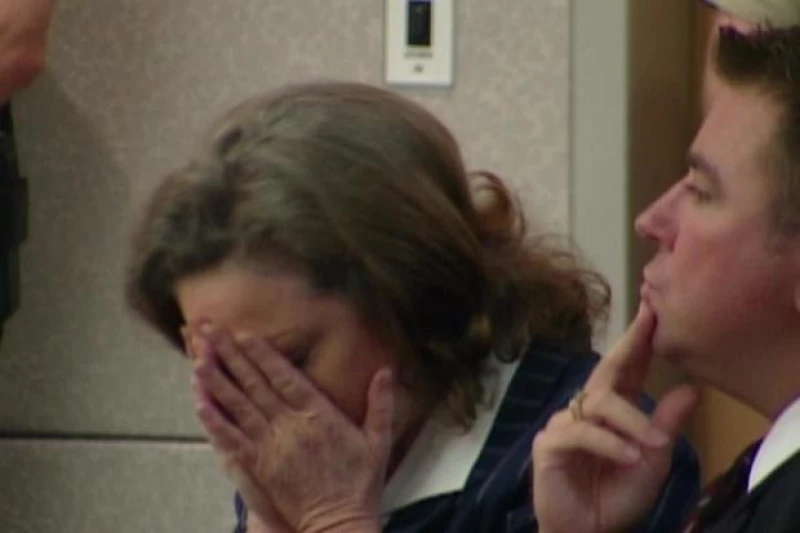
At the time of her conviction for the murder of her husband, she was 54 years old and sentenced to 25 years-to-life.
Jane Dorotik (jail interview): I mean, I just, I can't see my way clear to a life in prison. I just can't see it.
Determined to prove the jury got it wrong, Jane became her own advocate, working on her case for many years. "48 Hours" spoke with Jane again two decades later about her efforts.
Jane Dorotik: All through the prison — my prison journey, I continued to write to … all innocence projects I could think of, asking for help. … At the same time, realized … that I had to fight for myself.
Jane filed motions from prison citing such issues as insufficient evidence and ineffective assistance of counsel.
Jane Dorotik: I would describe my defense as limited and inadequate.
In her filings, Jane indicated that she wanted to testify at her trial but had left that decision up to her attorney. And that had she testified, she could have explained Bob's stomach contents — stating that he sometimes ate leftovers from the previous night. She also described her attorney's alternate suspect theory, pointing to her daughter Claire as the killer, as absurd.
Erin Moriarty: Do you believe that your daughter Claire had anything to do with the death of her dad?
Jane Dorotik: Absolutely unequivocally not. And my defense attorney, everybody knew she was away for that weekend.
In regard to that defense strategy, Claire, later wrote in a book, "how could I be angry at my mother, when all I did was worry about her." Jane's lawyer, whom "48 Hours" interviewed at the time of her trial, did not speak with us again.
Jane Dorotik: That was the worst strategy of my life ever… I said to my attorney, "If anything happens to Claire, I'm gonna stand up and say I did it."
In her filings, Jane also questioned why her defense attorney accepted the "bad forensics "pointing to the bedroom as the murder scene, rather than presenting other scenarios as to where and how Bob Dorotik could have been murdered.
Erin Moriarty: Did the defense too easily accept the bedroom as a crime scene?
Matthew Troiano: That is a very legitimate argument.
Legal Analysis by Matthew Troiano: The defense in this case made a strategic decision. They chose to concede that a crime happened in a specific location and then come up with a different narrative of how it occurred. This likely led them to point the finger at Claire for the murder.
Matthew Troiano: The defense had to shift blame to someone else for the incident that took place in that particular location. They chose to focus on the daughter, suggesting she had a disagreement with her father. This was a risky move.
Erin Moriarty: Have you ever encountered this type of defense strategy before?
Matthew Troiano: It's not common. Such a defense can only work when there is clear evidence to support it. Without that, it becomes a showstopper.
Matthew Troiano: The importance of critical evidence cannot be overstated.
Jane Dorotik: Unfortunately, that evidence was not thoroughly pursued. I was unaware of all the witnesses and if there had been a more comprehensive investigation initially, all of that information would have come to light.
Over the years, Jane consistently raised concerns about the handling of her case, arguing that authorities unfairly targeted her from the start and neglected other potential leads. Despite her efforts, her motions were repeatedly denied. As for Jane's claims of ineffective counsel, the judge dismissed them, stating that her attorney's performance was adequate and did not impact the case's outcome.
Jane Dorotik: There were numerous moments where I questioned if things would ever take a positive turn. It was a challenging journey.
Nevertheless, Jane persisted in her quest for exoneration, particularly as advancements in DNA technology emerged. In 2012, she petitioned for DNA testing of the rope found around Bob's neck and other items like his fingernail clippings, which had been preserved but never analyzed. Finally, in 2015, her request was approved.
Erin Moriarty: Is it uncommon that she finally received testing after filing motions on her own?
Matthew Troiano: Yes, it's very atypical.
It was during this period that Jane attracted the attention of a wrongful conviction organization, Loyola Law School's Project for the Innocent.
Jane Dorotik: I received a wonderful letter from Loyola stating, "You've reached out to us and we're intrigued by your case. ... And following that, Loyola took charge. They conducted the testing.
And the results of that testing, along with a fresh review of other evidence, would alter the direction of the case.
Matt Troiano: That's really what changes the narrative to suggest that there's more to this. It goes beyond just a botched investigation. There's a different story emerging from these test results. ... there's indication that another individual could be implicated.
A FRESH PERSPECTIVE ON THE EVIDENCE
Matthew Troiano: When we analyze the evidence in this instance ... the subsequent testing uncovers the possibility of an alternate explanation for the events ... shedding new light on what might have transpired here.
Jane Dorotik spent years behind bars asking for a new examination of the evidence used to convict her of her husband Bob's murder. Now, working with a team from Loyola Project for the Innocent, the court allowed them to have new DNA testing on items such as the rope found around Bob Dorotik's neck, his fingernails, and clothing. Appeal filings state that foreign male DNA was found on several items.
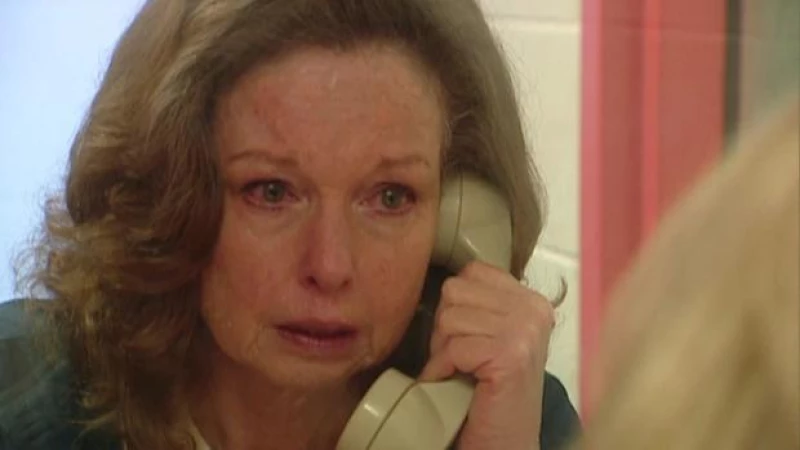
Jane Dorotik: The results of that — none of my DNA anywhere.
Matthew Troiano: There is physical evidence … from fingernail clippings … from a rope … from his clothing, that is foreign to Jane.
The team from Loyola Project for the Innocent declined to be interviewed. We asked Nathan Lents, a Professor of Biology and Forensic Science at John Jay College of Criminal Justice, who was not involved in the case, to review court documents about new evidence, such as the DNA on the rope.
Nathan Lents: While they didn't get a profile that would be good enough to search a database or even match to a suspect, they did get enough DNA that is not attributable to Bob or to Jane.
But while Jane and her team believed the results pointed to her innocence, the state came to a different conclusion, stating in filings: "… the DNA obtained was too low level to make any reliable interpretation."
Lents agrees the DNA levels were low, but he believes it was enough to exclude Jane, and that the absence of Jane's DNA on the rope, as well as under Bob's fingernails or on his clothing, is significant.
Nathan Lents: With the theory of crime that they presented, you would expect a lot of Jane's DNA on Bob … and if — if she had moved his body, there's a lot of DNA transfer that might have taken place there — that wasn't found.
The appellate team also reviewed the bedroom blood evidence the prosecutor told the jury was fully tested and was Bob's.
Prosecutor Bonnie Howard-Regan (in court): Now, the evidence will show that all this blood that has been described to you, the observations made in this bedroom, that it was all sent out for DNA analysis, and it all came back Bob Dorotik's blood.
But according to the appeal, not every single spot in the bedroom believed to be blood was tested. Instead, representative samples were tested.
Nathan Lents: There were cases where just simply one swab with a control was taken and it was representative, uh, of a variety of spots. That's not good practice … it just invites misinterpretation.
Matthew Troiano: When you're talking about blood spatter and you're trying to analyze how it got there … you need to do a fairly comprehensive test to be able to draw the conclusion that you're drawing.
Erin Moriarty: But I think the prosecution could argue … You can't afford to test, can you, every single drop that looks like blood?
Matthew Troiano: Right. … But when you say we did everything … and that's not accurate, that's where the problem lies.
In fact, the appellate team says that several blood-like stains on items including a pillow sham, the nightstand, a lampshade, turned out not to be blood.
And there were those stains on the bedspread, which criminalist Charles Merritt pointed to at trial and described as Bob's blood. Jane's lawyers learned those particular spots were never tested at all, and due to improper storage, the bedspread could not be tested again.
The handling of the evidence, over the course of the entire investigation, was also raised on appeal.
Nathan Lents (looking at photo with Moriarty): This one is hard to even look at. Um, you have an investigator who definitely should know better, um, handling murder evidence with his bare hands. … In addition to obviously depositing his own DNA all around this crime scene, he's also risking transferring evidence from among the various spots that he's collecting.
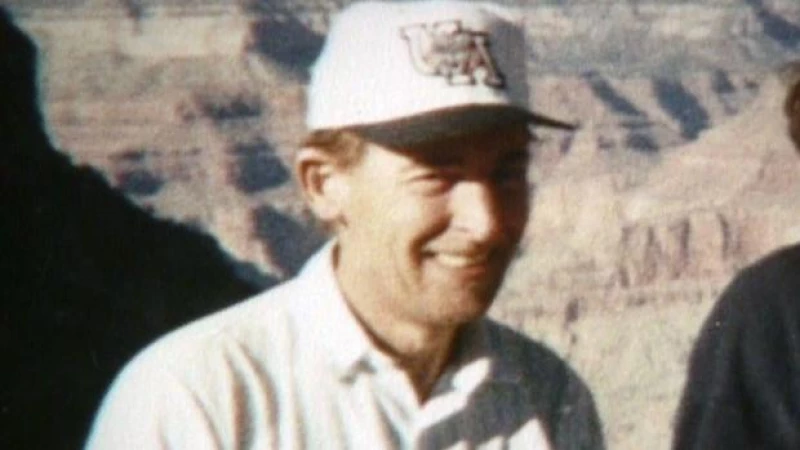
And there's that syringe, with Bob's blood and Jane's fingerprint, found in the bathroom garbage — something the appellate team, and Lents, thought could be explained.
Nathan Lents: And if you throw that syringe in the garbage can … Bob throws a — a bloody Kleenex in that garbage can, they could transfer. Transfer of DNA from one object to another in a trash can is not unexpected.
Lents raises doubts about the syringe found in the garbage, shifting suspicion away from Jane.
Nathan Lents: In the scenario of cleaning up after a murder, leaving a bloody syringe in the waste basket doesn't make sense.
However, the state continues to support its initial investigation, affirming that the bedroom was the site of the murder and insisting that the evidence still incriminates Jane Dorotik as the perpetrator. The prosecution argues that the defense's claims are based on speculation and inaccuracies.
Contrary to the state's stance, Jane's legal team argues that the bedroom did not exhibit typical crime scene characteristics, a viewpoint shared by Lents.
Nathan Lents: The evidence does not consistently indicate a violent attack occurred in that bedroom. If Bob were alive today and authorities inspected his room, no one would conclude that a murder took place there.
Jane Dorotik: Considering all the evidence Loyola was able to dismantle... and yet we know what was presented to the jury during the original trial... How could this happen?
JANE DOROTIK'S QUEST FOR FREEDOM
During 2020, Jane Dorotik, while her legal team examined new evidence, was granted temporary release from prison due to COVID-19 concerns. The crucial question arose: would the evidence uncovered by her attorneys be enough to secure her permanent freedom?
In the summer of 2020, Jane Dorotik and her legal team were optimistic that a court ruling could overturn the jury's decision, transforming her temporary release into a permanent one.
Erin Moriarty: What were the key arguments presented by her legal team?
Matthew Troiano: The initial testing conducted was deemed inadequate. The presentation of this testing to the jury was deemed inaccurate. Various arguments were put forth to support her case.
A hearing was on the calendar, but suddenly the state requested an impromptu virtual hearing.
PROSECUTOR KARL HUSOE (remote hearing): The prosecution is willing to concede the claim of new evidence by the petitioner…
The prosecution acknowledged the assertions made by Jane's legal team all along.
PROSECUTOR KARL HUSOE (remote hearing): The DNA evidence available in 2020 is of a significantly higher quality and quantity compared to what was presented during the 2001 trial.
The new DNA test results, along with concerns regarding the handling of evidence by the Sheriff's Crime Lab, raised doubts about the original verdict. However, what followed was even more surprising. The state requested that Jane's murder conviction be overturned… and the judge granted the request.
Jane Dorotik: I always had faith that eventually… the truth would prevail.
But Jane's ordeal wasn't over. Three months later, in another shocking move, the DA's office decided to retry her.
Jane Dorotik: I don't think any of us thought … that San Diego County would attempt to retry me. But they did.
Matthew Troiano: The state believes that she did this, and they want to pursue it. … Then you have this battle … in court. … If you're conceding that there were problems … how are you going to do it again, essentially with the same evidence?
Jane Dorotik: It was astounding to sit in that courtroom and see what they try and put forward as actual evidence. And then also thrilling to see my team take it apart.
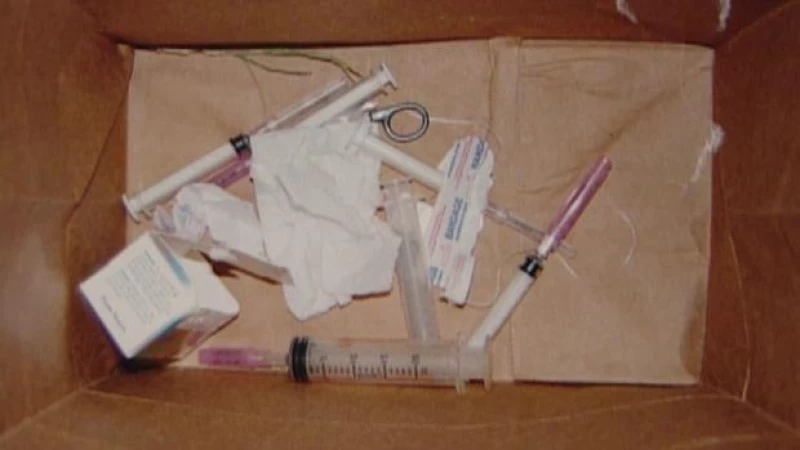
Jane's attorneys questioned the credibility of several of the State's experts, including Charles Merritt of the Sheriff's Crime Lab. The judge ultimately ruled that the new trial could go ahead, but that some key evidence presented in her original trial would not be admissible — including those tire tracks near where Bob's body was found that were linked to Jane's truck.
Matthew Troiano: You have a number of different trucks that could be consistent with those tire tracks … It's in essence kind of junk science-y.
In May 2022, just as jury selection was about to begin, the prosecution surprised everyone yet again.
Jane Dorotik: As we enter the courtroom, the jury is assembled and ready to enter on Monday morning. But everything has changed.
Deputy DA Christopher Campbell (in court): We no longer believe that the evidence is strong enough to prove guilt beyond a reasonable doubt and convince all 12 members of the jury. Therefore, we are asking the court to dismiss the charges at this time. Thank you.
Judge: Ms. Dorotik, you are free to go. Good luck to you ma'am.
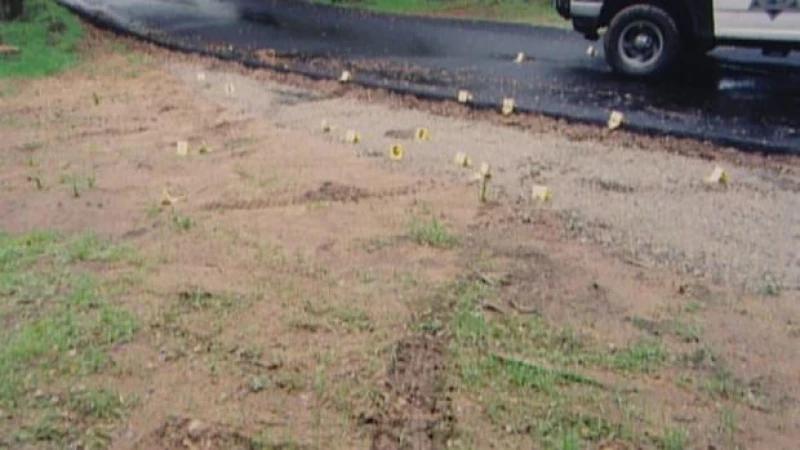
Following the hearing, Jane's legal team discussed her lengthy battle.
The District Attorney's Office and Sheriff's Department declined to comment to "48 Hours." The case against Jane Dorotik was dismissed without prejudice, meaning that if new evidence emerges, charges could potentially be reinstated in the future.
Erin Moriarty: However, doesn't that still cast a shadow over Jane Dorotik?
Matthew Troiano: Oh, sure, it does. I mean, there's no question about it. … From a practical perspective, do I think it's over? Yeah, I think it's over. But from a legal perspective, no.
Jane Dorotik is working to rebuild her life after spending nearly two decades in prison.
Jane Dorotik: My entire family has been blown apart by this hurricane of events. … It's been heartbreaking on so many levels.
Claire Dorotik did not respond to"48 Hours"' request for comment, but Jane says they are still close. Her son Nick died in 2023. Alex Dorotik did not provide a comment to "48 Hours," but according to filings by the state, he remains convinced his mother killed his father.
Erin Moriarty: Do you have hope that your family will come together at some point?
Jane Dorotik: Of course I do. Of course I have hope.
Jane also has hope that she can make a difference in other people's lives, as she works with advocacy groups that help incarcerated women.
Jane Dorotik: To me, it's not just about my story. And yes, we can all sit here and say, "This is so horrendous." And "How did this happen to this woman?" … But unless we look systemically, how many others are we gonna find? And to me, that's critically important.
Many unanswered questions about this case remain, including, perhaps, the most important one.
Matthew Troiano: The mystery surrounding Bob Dorotik's disappearance remains unsolved. Questions linger: What happened to Bob Dorotik? Where is the justice for Robert Dorotik?
Jane Dorotik has taken legal action against the County of San Diego, as well as several members of the San Diego County Sheriff's Department and its Crime Laboratory.
Produced by Ruth Chenetz and Dena Goldstein. Atticus Brady, George Baluzy and Joan Adelman are the editors. Greg Fisher and Cindy Cesare are the development producers. Lourdes Aguiar is the senior producer. Nancy Kramer is the executive story editor. Judy Tygard is the executive producer.

